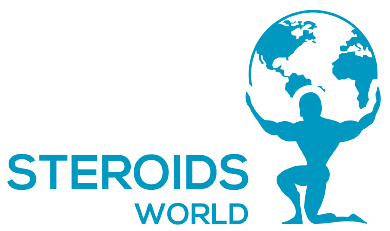There is a very modest quantity of testosterone that is free and able to interact with cellular receptors. The majority will attach to the protein’s albumin and SHBG, which temporarily block the hormone’s function. SHBG is also known as sex steroid-binding globulin and testosterone-estradiol-binding globulin. Although albumin is present at a level 1,000 times higher than SHBG, steroid hormones bind to SHBG significantly more strongly than albumin (with a roughly 1,000-fold stronger affinity). As a result, both binding proteins have roughly comparable levels of activity throughout the body. In males, testosterone is normally distributed as follows: 53% of it is tied to albumin, and 45% of it is bound to SHBG. In a free, unbound condition, there is the final 2% of the average blood concentration. Females have a lower level of free testosterone, which is estimated to be around 1%. Although it is only present in these tissues, a binding protein known as ABP (androgen binding protein) aids in mediating androgen action in the reproductive system but has no bearing on muscle growth.
One that only a tiny portion of free testosterone is active at any given moment, the amount of free testosterone present in the circulation is also a crucial mediator of its action. It should be noted that when testosterone is modified to create novel anabolic/androgenic steroids, this usually results in changes to the steroid’s ability to bind to plasma proteins. This is crucial to take into account since, milligramme for milligramme, the molecule should be more active the greater the percentage of free hormone we have. Additionally, there may be a significant difference between several molecules. While mibolerone (7,17 dimethyl-nandrolone) and bolasterone (7,17 dimethyl-testosterone) have almost negligible affinity for this protein, Proviron (1-methyl dihydrotestosterone) interacts with SHBG several times more strongly than testosterone19 (clearly the reason these steroids are such potent androgens).
The amount of SHBG in the body is likewise erratic and is susceptible to a variety of influences. The blood’s high levels of thyroid hormones and oestrogen appear to be the most noticeable. This plasma binding protein typically reduces as thyroid and oestrogen levels rise and increases as oestrogen and thyroid levels rise. It has also been demonstrated that this protein is significantly reduced by an increase in androgen brought on using anabolic/androgenic drugs. 1989 German research that found a high propensity for SHBG lowering with the oral anabolic steroid stanozolol amplifies this. When normal participants received a daily dosage of.2 mg/kg body weight (approximately 18 mg for a 200-pound male), SHBG was reduced by about 50% after just 3 days. Similar outcomes have been attained with the use of injectable testosterone enanthate, however, the impact of stanozolol was substantially stronger when compared to milligramme for milligramme. Reaching this degree of reaction might have been influenced by the administration method. We may cite other studies contrasting the impact of oral vs. transdermal oestrogen, even if the injectable was not tested in the German study. When the medicine is administered orally, these exhibit a significantly larger reaction in SHBG levels.
The fact that SHBG is made in the liver may help to explain this. Therefore, we cannot assume that Winstrol injections, or injections of steroids in general, would exhibit the same degree of potency. There are other ways to enhance the level of free testosterone besides lowering the level of plasma-binding proteins. By competing with them for binding, steroids having a high affinity for these proteins may also raise the level of free testosterone. Naturally, more plasma proteins will remain unbound if the added substance makes it harder for testosterone to identify accessible plasma proteins. A variety of steroids, such as Proviron, Oral-Turinabol (chlorodehydromethyltestosterone), and dihydrotestosterone, have a considerable predisposition for this effect. If using several anabolic/androgenic steroids may change the amount of free testosterone in the body, it is also possible that one steroid might make another stronger through the same methods. In contrast to its weak anabolic properties, Proviron has a very high affinity for SHBG, which may make it advantageous by displacing other steroids that are more effective in these tissues.
This discussion must not make us believe that binding proteins have no useful purpose. They are essential for the movement and operation of endogenous androgens. Binding proteins work to prevent the steroid from breaking down quickly, maintain a more constant blood hormone content, and make it easier for the hormone to be distributed evenly to different bodily organs. Sex hormone binding globulin (SHBG-R) has recently been found to have a particular receptor on the membrane surface of steroid-sensitive body cells, which points to a much more nuanced function for this protein than merely hormone transport. However, it is still evident that one of the most efficient ways to change pharmacological potency is to play with a hormone’s propensity to reside in an unbound state.



















